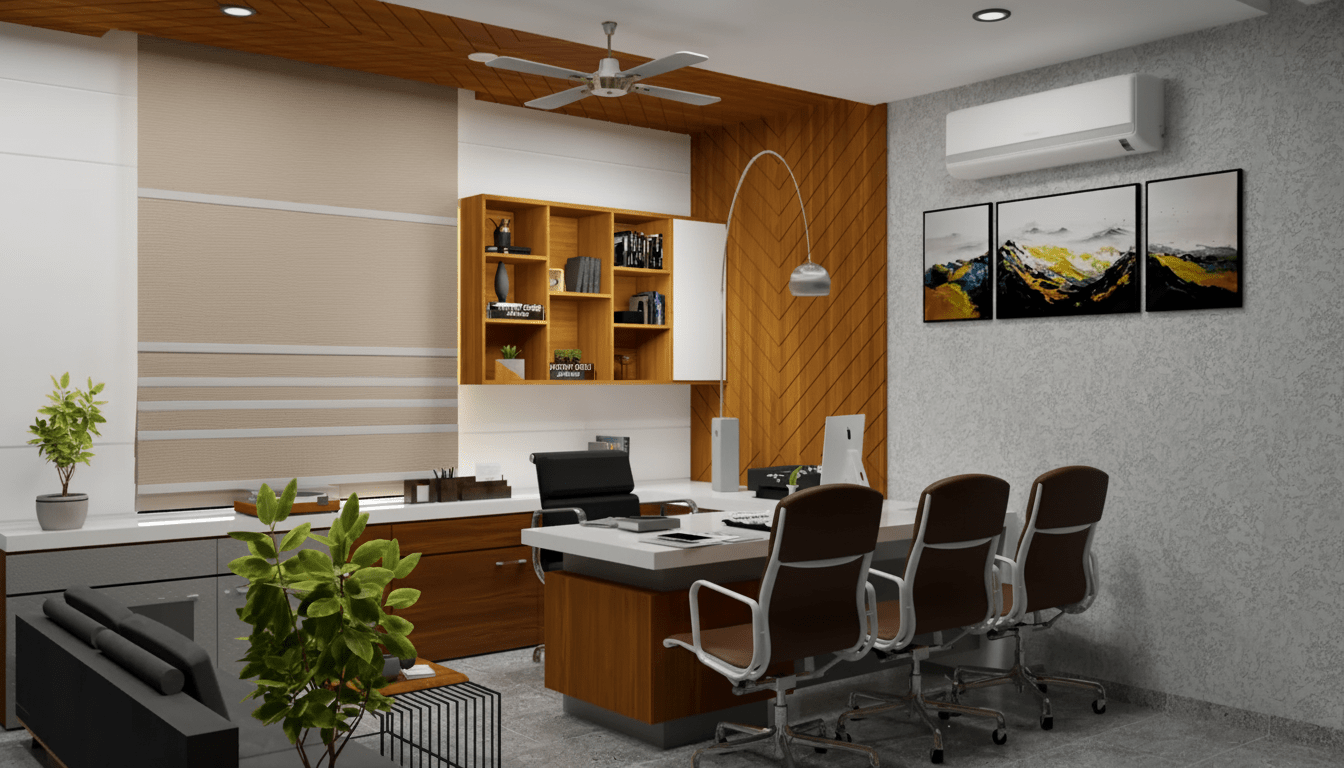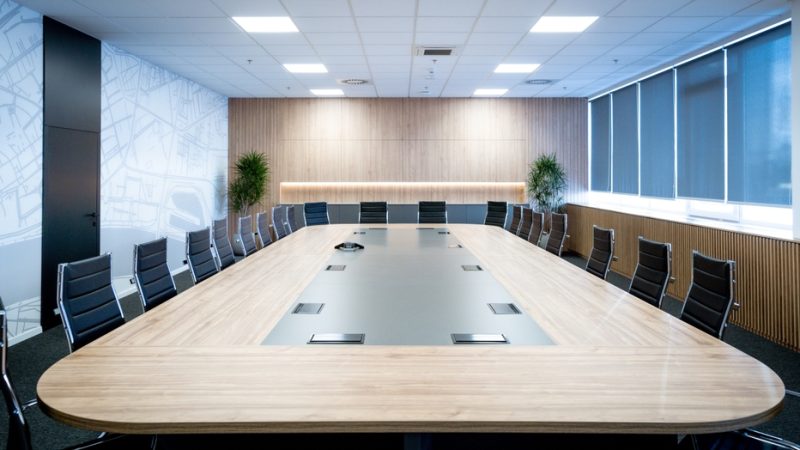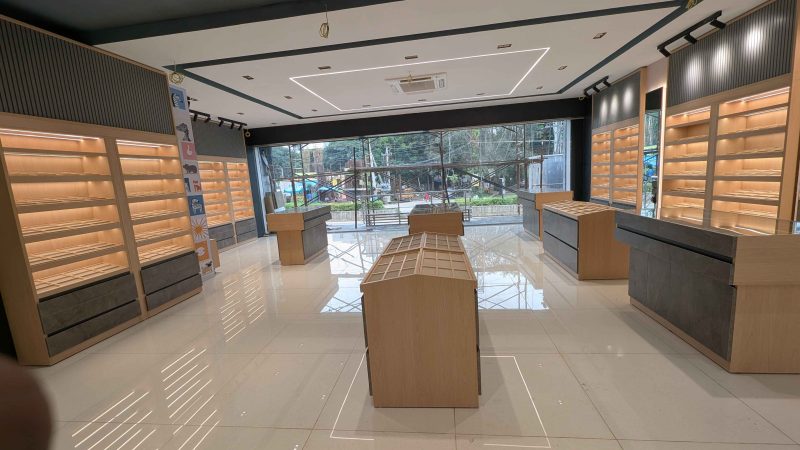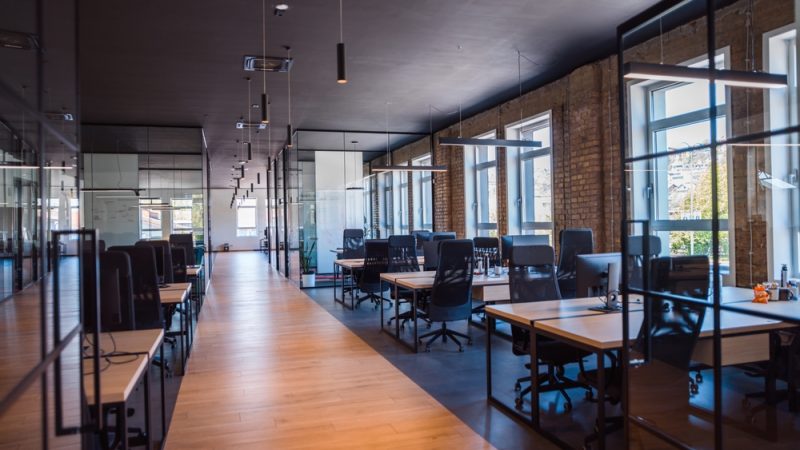Modern Office Interior Design Ideas for Productive Workspaces

Designing a modern office isn’t just about putting desks and chairs together. Office interior design affects employee productivity, company culture, and even how clients perceive your business. A well-planned office balances functionality, aesthetics, and comfort—making it a place where people actually enjoy working.
In this guide, we’ll answer the most frequently asked questions about office interior design, giving you practical ideas to transform any workplace into a productive, inspiring environment.
Why Is Office Interior Design So Important?
Office design directly impacts:
-
Productivity: Comfortable, functional layouts help employees stay focused.
-
Well-being: Ergonomic furniture and natural light improve physical and mental health.
-
Company culture: Open, collaborative spaces foster teamwork and innovation.
-
Client impressions: A professional-looking office reflects your brand’s values.
Simply put, good design helps people do their best work while feeling good about it.
What Are the Key Elements of a Well-Designed Office?
A functional, modern office usually includes:
-
Smart layouts with a mix of collaborative and private spaces.
-
Quality lighting—a blend of natural and artificial sources.
-
Ergonomic furniture for comfort and health.
-
A thoughtful color palette that influences mood and energy.
-
Technology integration for meetings, presentations, and everyday work.
When these elements come together, they create a balanced and efficient workspace.
How Do I Choose the Right Color Scheme for an Office?
Colors affect mood, energy, and focus. Some popular choices include:
-
Neutral colors (white, gray, beige): Professional and versatile.
-
Blue tones: Encourage focus and calmness—ideal for meeting rooms.
-
Green shades: Reduce stress and bring a natural feel indoors.
-
Yellow or orange accents: Stimulate creativity and collaboration.
Tip: Use your brand colors subtly to maintain a professional look while reinforcing identity.
Which Office Layouts Work Best for Productivity?
The ideal layout depends on your team size and work style.
-
Open-plan layouts promote communication and teamwork.
-
Activity-based layouts provide quiet zones, collaboration spaces, and relaxation areas.
-
Hybrid layouts blend private offices with shared spaces for flexibility.
-
Hot-desking systems are great for remote or rotating teams.
Many businesses now combine layouts to cater to different tasks and personalities.
How Can Office Design Improve Employee Well-Being?
Employee health and happiness depend on more than salaries—it’s also about the environment.
-
Use ergonomic chairs and desks to prevent back and neck pain.
-
Add plants and natural light to reduce stress and improve air quality.
-
Create relaxation areas for breaks or casual conversations.
-
Design quiet rooms for focused work or personal calls.
A healthy office environment reduces burnout and increases job satisfaction.
What Role Does Lighting Play in Office Interiors?
Lighting sets the mood and supports visual comfort.
-
Natural light is ideal—position workstations near windows if possible.
-
Task lighting like desk lamps helps with detailed work.
-
Ambient lighting provides overall illumination without glare.
-
Accent lighting adds style to reception areas or meeting rooms.
LED fixtures with adjustable brightness are energy-efficient and employee-friendly.
How Do You Design Small Office Spaces Effectively?
Small offices need smart planning to avoid feeling cramped:
-
Stick to light wall colors to make spaces feel larger.
-
Choose multi-functional furniture like foldable tables or storage ottomans.
-
Use vertical storage—shelves, wall cabinets, and pegboards save floor space.
-
Add mirrors or glass partitions to increase light flow and openness.
With the right layout, even small offices can feel spacious and professional.
Should Offices Include Breakout or Recreational Areas?
Yes, breakout areas encourage collaboration, relaxation, and creativity. Examples include:
-
Cafeterias or coffee corners for informal meetings.
-
Lounge spaces with comfortable seating for brainstorming.
-
Game rooms or quiet pods for stress relief or focused work.
These areas help employees recharge, leading to better productivity overall.
What Are Some Eco-Friendly Office Design Ideas?
Sustainable offices benefit the environment and employees.
-
Install LED lighting and energy-saving appliances.
-
Use eco-friendly materials like bamboo or recycled wood for furniture.
-
Add indoor plants to improve air quality.
-
Incorporate water-saving fixtures in restrooms and kitchens.
Eco-friendly designs also show clients and employees that you care about sustainability.
How Much Should You Budget for Office Interior Design?
Costs depend on size, location, and customization, but common expenses include:
-
Furniture: Desks, chairs, storage units
-
Flooring and partitions: Carpets, tiles, glass walls
-
Lighting fixtures: Overhead lights, task lamps
-
Decor and branding: Art, signage, wall graphics
Setting a clear budget helps prioritize needs without overspending.
Should I Hire a Professional Interior Designer?
Hiring professionals can save time and ensure a polished outcome. They offer:
-
Space planning expertise for efficient layouts.
-
3D visualizations so you can preview designs before construction.
-
Material sourcing for quality and cost-effectiveness.
-
Project management to coordinate contractors and timelines.
For small updates, DIY works fine, but big projects benefit from expert guidance.
What Mistakes Should Be Avoided in Office Interior Design?
Common mistakes include:
-
Ignoring acoustics in open-plan offices—use soundproofing materials or partitions.
-
Overusing brand colors until they feel overwhelming.
-
Skipping employee input—design should reflect how people actually work.
-
Poor lighting choices that cause eye strain or dullness.
Avoiding these pitfalls saves time, money, and headaches later.
How Do You Add Personality to an Office Space?
Offices don’t have to feel bland. Add character with:
-
Feature walls displaying company history or mission statements.
-
Local artwork or murals to create visual interest.
-
Custom furniture or color accents reflecting your brand.
-
Employee boards for sharing ideas, wins, or announcements.
Personal touches make the space welcoming while reinforcing your culture.
Conclusion: Start Designing a Workspace That Works
Office interior design isn’t just about looks—it’s about creating an environment where people feel comfortable, inspired, and productive. From layouts and lighting to wellness areas and sustainability, every choice impacts how your team works and collaborates.
Start small: upgrade lighting, add plants, or create a breakout zone. Over time, these changes will transform your office into a space employees love.





